Are you a Quiet Speculation member?
If not, now is a perfect time to join up! Our powerful tools, breaking-news analysis, and exclusive Discord channel will make sure you stay up to date and ahead of the curve.
Modern Top 5 is a long-running article series in which I use a set of pre-defined metrics to rank the best of breed in different categories. Past contests have included utility cards, hosers, enablers, beaters, and planeswalkers... come to think of it, though, most of those contests are due for an update! Today's brand-new entry pulls double-duty as a way to close out our comprehensive Modern Horizons 2 spoiler review, and goes deep on my picks for the top five best cards of the set.
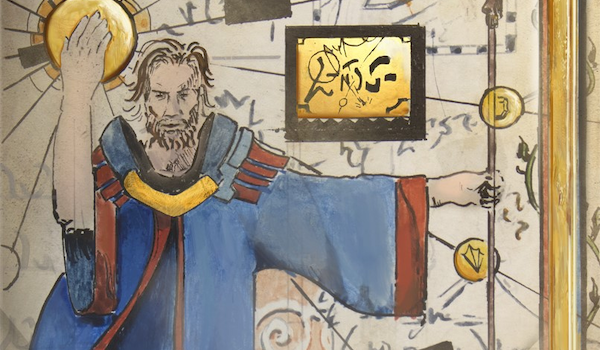
Modern Horizons 2 is no ordinary set, and this is no ordinary Modern Top 5. To go as deep as possible on the picks, we'll split the article into two meaty halves, going over places #5-3 today and unveiling the two grand finalists tomorrow. But first, the metric!
Setting the Metric
Leave it to me to have already designed a perfectly usable metric for this evaluation: the original power/flexibility/splashability scale introduced four years ago, which lends itself well to general overviews like this one for a whole expansion. Here's an explanation of that, for those of you who haven't seen it in just shy of half a decade.
No Modern Top 5 would be complete without a metric. Since the top cards in a given expansion can include any type of spell—planeswalker, hate, beater—we’ll aim to use the most general metrics possible. I think those happen to be the ones established in the series’s first entry, Modern Top 5: Utility Cards. Here they are again.
- Power: The degree of impact the card tends to have for its cost.
- Flexibility: The card’s usefulness across diverse situations and game states.
- Splashability: The ease with which Modern decks can accommodate the card.
Power and flexibility will be rated by considering both a card’s floor (the least it will do) and its ceiling (its best-case scenario). For example, Lightning Bolt‘s power floor is higher than Fatal Push‘s, as Push is dead when opponents have no creatures while Bolt can go to the face.
Splashability will be rated by considering how many existing Modern decks can accommodate the card and whether they’ll want it. For example, despite its lack of a color identity, Ghost Quarter doesn’t fit into BGx midrange decks. These decks can easily run Fulminator Mage as mana disruption instead, and prefer not to miss a land drop if they don’t have to.
Each metric will be rated out of 5, giving cards a total rating out of 15. As ever, the usual disclaimer stands: just because a card scores low or doesn’t make the list means little in terms of its overall playability. After all, splashability is a metric. Some of the strongest cards in the format in terms of raw tournament wins are themselves rather limited in terms of which decks can employ them.
Incarnations Need Not Apply
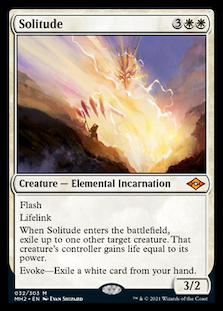 While the better Incarnations do score enough points on these metrics to make the Top 5, we've already ranked and gone over them in detail, and I wanted to cover them as a group. But for reference, I'd score them as follows in terms of overall points:
While the better Incarnations do score enough points on these metrics to make the Top 5, we've already ranked and gone over them in detail, and I wanted to cover them as a group. But for reference, I'd score them as follows in terms of overall points:
- Grief: 8/15
- Fury: 8/15
- Endurance: 9/15
- Subtlety: 11/15
- Solitude: 12/15
That means the latter two would edge out the picks in today's article. As we saw yesterday, this cycle is unmistakably quite pushed and very powerful. With that out of the way, though, let's check out MH2's top non-Incarnation cards.
#5: Sudden Edict
Overall: 9/15
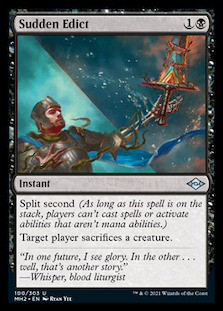 Power: 3
Power: 3
Two mana to remove a creature? Yawn! This is the format of Path to Exile, Fatal Push, and the infamous Lightning Bolt. But there are some things even Path can't take out, such as a cheated-in Emrakul, the Aeons Torn or a full-grown Hexdrinker. Edict doesn't ask questions, as it doesn't care what your opponent might have to say: if they only have out one creature, it is 100% getting off the table, even if they're smugly gripping Counterspell. Split second makes the card a strict upgrade to Diabolic Edict, a card played in Legacy to this day for its renowned versatility.
Flexibility: 3
Edict is flexible in that it can potentially remove anything, which is more than any other instant in Modern can say for itself—even Emrakul, the Promised End, with its derpy "protection from instants," is Edict food. But it's still held back by a couple factors. For one, it costs two mana, which lowers its potential use in many situations relative to something like Fatal Push. And second, removing one key threat with high accuracy is dependant on opponents not having other creatures they can sacrifice instead. That sits this card somewhere in the middle for me flexibility-wise, but make no mistake: it's Edict's potential flexibility in certain scenarios that will guarantee it long-term Modern play as of Horizons becoming legal.
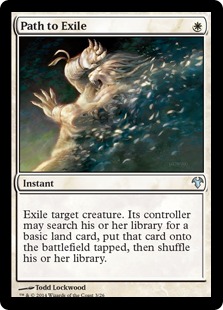 Splashability: 3
Splashability: 3
Sudden Edict is no harder to splash than Tarmogoyf, but players may lack incentive to do so. For example, white decks have less use for Edict since they've already got Modern's other premier removal, like Path to Exile and Prismatic Ending. Other strategies still prefer efficient removal to cards that can delete an Emrakul. For these reasons, the card seems mostly destined to show up in the sideboards of black-heavy midrange decks and black-featuring combo decks, which it will for maybe ever. It's absolutely coming in for matchups where players want all the removal they can get, but also provides a blanket check to strategies that were previously tough to stop, such as those focused on sneaking in a hit with Griselbrand or Emrakul ASAP.
#4: Urza's Saga
Overall: 10/15
 Power: 5
Power: 5
Urza's Saga did not receive much press compared to the set's more straightforward goodies, but I believe it's quietly among the best cards in Modern Horizons 2. Part of what makes players allergic to Saga is its weirdness: there is just no precedent for a card like this, let alone an enchantment land. As sometimes happens without precedent, early designs can prove busted in application (see also: Lurrus of the Dream-Den; Skullclamp; Tarmogoyf; Jace, the Mind Sculptor).
Power level illustrates how much the card does for its cost. Saga is a zero-mana play that, when sequenced properly, locks in a pair of massive beaters and tutors a critical artifact from the deck. Being a land, it's also incredibly difficult to interact with meaningfully, being immune to the likes of Abrupt Decay, Prismatic Ending, Thoughtseize, and more.
Here is an example sequence that will see plenty of action in artifact decks going forward. Take for granted that the Saga player makes their land drop each turn.
- Turn three: Play Saga, tap it to do something else
- Turn four: Tap Saga and two lands to make a Construct
- Turn five: Draw for turn, tap Saga and two lands to make a Construct tutor Basilisk Collar, equip it to the first Construct, and attack for a life swing of 6+
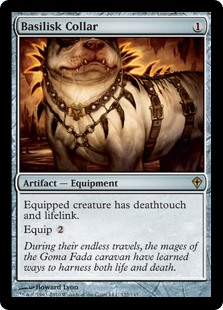 Much of Saga's power lies in its reliability, and the above constitutes what I'd consider a pretty comprehensive plan for a card whose floor is literally being a land that taps for colorless. One strike against Saga is that it will be traded in for an artifact every time; there's no option to keep it around as a land. But because of how saga enchantments work, players can still float a colorless in the main phase of that last turn to make their big play, and the mana it would normally cost to cast a one-mana artifact is on the house—if we're talking raw mana numbers, Saga is a Sol Ring on that final turn. I've found that being smart about which turn Saga is deployed, rather than just slamming it right away, allows for enough planning that trading it for a choice one-drop is almost always a big benefit.
Much of Saga's power lies in its reliability, and the above constitutes what I'd consider a pretty comprehensive plan for a card whose floor is literally being a land that taps for colorless. One strike against Saga is that it will be traded in for an artifact every time; there's no option to keep it around as a land. But because of how saga enchantments work, players can still float a colorless in the main phase of that last turn to make their big play, and the mana it would normally cost to cast a one-mana artifact is on the house—if we're talking raw mana numbers, Saga is a Sol Ring on that final turn. I've found that being smart about which turn Saga is deployed, rather than just slamming it right away, allows for enough planning that trading it for a choice one-drop is almost always a big benefit.
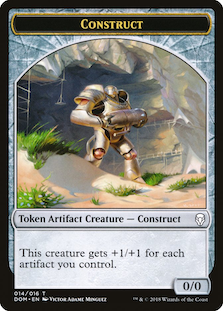 The natural next question: how good is Construct? Without any other artifact support, that lifelinker (and its partner blocker) will be a 3/3 on the turn it crashes into the red zone. With just a single additional artifact, even Darksteel Citadel, it grows to the much larger 4/4, and things just scale up from there. When chaining multiple Sagas, they rapidly become enormous. In an artifact-heavy shell, the ability to pump two massive tokens out of a land that's also tutoring up a critical card will make Saga among the better cards in the deck, both to open and to draw into at any game stage.
The natural next question: how good is Construct? Without any other artifact support, that lifelinker (and its partner blocker) will be a 3/3 on the turn it crashes into the red zone. With just a single additional artifact, even Darksteel Citadel, it grows to the much larger 4/4, and things just scale up from there. When chaining multiple Sagas, they rapidly become enormous. In an artifact-heavy shell, the ability to pump two massive tokens out of a land that's also tutoring up a critical card will make Saga among the better cards in the deck, both to open and to draw into at any game stage.
Flexibility: 4
Even though it "only" taps for colorless, Saga offers pilots oodles of versatility. Sure, players can always just make two big dudes and go to town with a Collar. But there are unending variations on this sequence: players need not make a Construct every turn if they have other things to do with their mana (although waiting to plop down Saga until one's other options are more or less depleted extracts maximum value from the land), and they can search up any number of powerful artifacts. Among the juiciest:
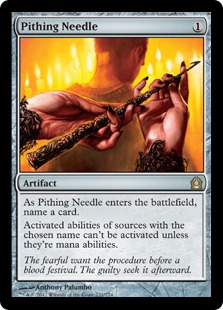 Basilisk Collar
Basilisk Collar- Grafdigger's Cage
- Relic of Progenitus
- Pithing Needle
Beyond whichever trinkets are best in the mainboard, any of these cards can be run at a single copy in the sideboard to be playing a functional five copies in game 2, four of which can't be countered or discarded and will come into play directly from the deck (essentially with suspend 2) without charging players a single mana. And for specific decks or more niche uses, there are plenty more intriguing artifacts to choose from.
Key cards in specific decks:
- Amulet of Vigor
- Animation Module
- Colossus Hammer
- The Rack
Niche options and bullets:
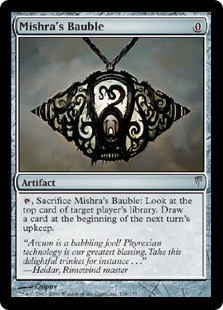
- Bomat Courier (we're gonna be attacking anyway)
- Expedition Map (keep them Sagas coming, or turn Saga into a tutor for lands)
- Mishra's Bauble (Urza's Saga: the rich man's Horizon Canopy!)
- Nihil Spellbomb (for those in black who like their graveyards)
- Brittle Effigy (heavy-duty creature removal in a pinch)
- Zuran Orb (sorry Burn)
That's a huge array of possible Saga searches, and the pool will only grow as Wizards continues printing Magic cards. Deploying Saga with some foresight lets players very reliably access an otherwise highly surgical piece of disruption on just the right turn, a godsend for the decks that can fit the land.
Splashability: 1
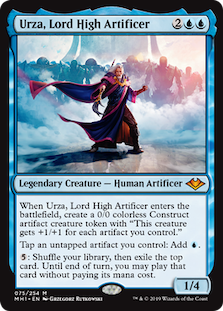 Here's where Saga drops the ball. Few decks in color-hungry Modern can afford to sleeve up colorless lands, and Saga also requires players to include one-drop artifacts that might not see play in the build otherwise. So besides meshing with a few very specific strategies, Saga demands significant commitment while deckbuilding.
Here's where Saga drops the ball. Few decks in color-hungry Modern can afford to sleeve up colorless lands, and Saga also requires players to include one-drop artifacts that might not see play in the build otherwise. So besides meshing with a few very specific strategies, Saga demands significant commitment while deckbuilding.
Because maximizing Saga is a mana-intensive affair, it plays exceptionally well with mana rocks, as these also happen to grow the Constructs. Realistically, though, any artifact-heavy deck that's not too demanding color-wise will love packing 2-4 of these. I'm thinking Urza, Lord High Artificer decks as well as ones that could use the bodies as blockers or a Plan B, but will mostly be drawn to the tutor effect, like Lantern and 8-Rack. And then there's the combo with Titania and Zuran Orb, which may also spawn a deck.
Another home for Saga is Eldrazi, both the colorless aggro strains I'm known for (where Saga shines bright for the bodies; more to come!) and Eldrazi Tron (where it will at the very least be run as a target for Expedition Map), but I imagine may creep up in number as players start to realize it's the best last land they could drop onto the battlefield). Being able to search up Basilisk Collar makes Saga very appealing for decks already locked into Walking Ballista.
#3: Prismatic Ending
Overall: 11/15
 Power: 3
Power: 3
Remember, we're measuring power by impact for cost. Much of the time, Ending won't provide an enormous swing on this metric: one mana to remove a one-mana spell; two mana to remove a two-mana spell; and so on. You'll always trade with opponents on mana, unless they cheated out their card that costs between one and five (not likely), and unless they in fact paid an additional cost for their card. Some examples of the latter: they tutor up a creature with Eladamri's Call, essentially making it cost an additional GW; they take themselves down to 8 life for Death's Shadow, a steep condition if the payoff creature gets removed; they gut their own graveyard for Kroxa, Titan of Death's Hunger, or sink extra mana into kicker, as with Tide Shaper.
But generally, Ending trades with opponents on mana to hard-remove a permanent. Which isn't necessarily bad; people snipe one-drops with Abrupt Decay all the time, while Ending will never overcharge for that kind of effect. It's just deece.
Flexibility: 5
 Here's where the points come rushing in. Modern deckbuilding has always been about striking a balance between artifact hate, enchantment removal, cards that interact well against planeswalkers, etc. Being able to target any permanent is the crux that brought Brazen Borrower into the fold of format playability despite its clear drawbacks. And it's the condition that ensures Prismatic Ending will go down as one of the most fearsome pieces of removal in the format.
Here's where the points come rushing in. Modern deckbuilding has always been about striking a balance between artifact hate, enchantment removal, cards that interact well against planeswalkers, etc. Being able to target any permanent is the crux that brought Brazen Borrower into the fold of format playability despite its clear drawbacks. And it's the condition that ensures Prismatic Ending will go down as one of the most fearsome pieces of removal in the format.
I remember when Isolate was spoiled and the Modern players I associated with all wondered about its playability here. "It removes Death's Shadow, but also Aether Vial!" "No more worrying about turn one Expedition Map!" "You could nab a Utopia Sprawl!" "Shame about Chalice of the Void, though..." No more! Prismatic Ending (while admittedly slower, at sorcery) does indeed exile Chalice of the Void, as X is payable whether or not players want to remove a high-cost card, and Ending says "or less," letting it remove 0-cost permanents. But it also removes literally everything else. Choke. Jace, the Mind Sculptor. Scourge of the Skyclaves. Batterskull. The Batterskull token, for one mana mind you. And all it asks are two things:
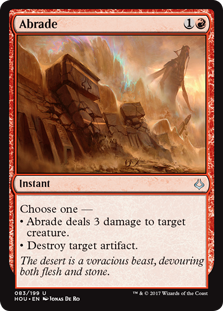 The same amount of mana spent by opponents (in terms of tempo, Ending is almost always a wash)
The same amount of mana spent by opponents (in terms of tempo, Ending is almost always a wash)- That players can produce enough different colors to make full use of converge (in a three-color deck, I'd call it a significant upgrade to Abrupt Decay, and the more the merrier)
It's true that Ending is a sorcery, and that quirk makes many clunkier removal options better in certain scenarios. If this card was an instant, I would give it a 6.
Splashability: 3
The balancing act of converge will limit Ending's widespread adoption. Not only is the card white, traditionally one of the weakest colors in Modern, but players must commit to multiple other colors as well if they want to tap into the sorcery's true power. I do think Ending is good enough to splash for, but not so much that all decks lacking white entirely will want to eschew on-color solutions to problem permanents such as Maelstrom Pulse or Abrade. Ending is by no means a death knell for all utility removal options. But in the decks that can swing it, absolutely.
Making a Splash
There's no doubt these cards will rock the Modern format. But a couple still remain that I'd peg as even more worthy of splashing, discussion, and... dare I say it... fear. Join me tomorrow for an in-depth discussion of the two best cards in Modern Horizons 2!



